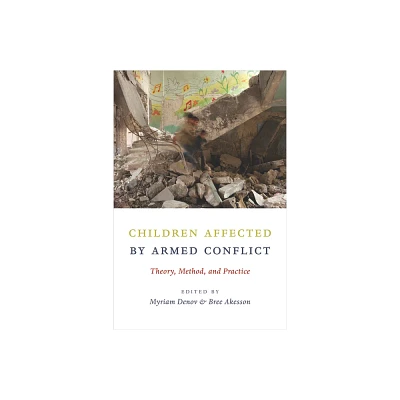Home
The Demography of Armed Conflict
Loading Inventory...
Barnes and Noble
The Demography of Armed Conflict
Current price: $54.99


Barnes and Noble
The Demography of Armed Conflict
Current price: $54.99
Loading Inventory...
Size: OS
*Product Information may vary - to confirm product availability, pricing, and additional information please contact Barnes and Noble
War and conflict, whether internal or international, remains a pervasive phenomenon affecting most regions of the world and particularly low-income countries. Demographic consequences of war and violence, especially deaths and forced migration, are amongst the gravest costs of war and receive much attention in mass media, although it is often difficult to quantify such effects. Furthermore, demographic factors, such as population pressure on natural renewable resources, migration, differential population dynamics by ethnic or religious group, or the number of young persons in a population, have been suggested as potential causes of conflict. Despite the obvious importance of both demographic causes and consequences of armed conflict, research on the demographic aspects of conflict is scarce.
This book brings together researchers from very different traditions to bridge gaps in the field, and to provide new insights into the demographic causes and consequences of armed conflict. The diversity of the authors, coming from demography, statistics, political science, sociology, anthropology, history, geography, economics and law, gives the reader a cross-cut of recent research in demography and armed conflict. The themes are equally diverse. Studies of demographic causes of conflict address issues of migration, ethnicity, population growth and youth bulges. Studies focusing on the consequences of conflict include some broad assessments of mortality from armed conflict, the estimation of casualties for prosecution of war crimes, as well as detailed case studies of conflicts in Bosnia and Herzegovina, Cambodia, Kenya, Mali, Rwanda, Sudan and Uganda.
This book brings together researchers from very different traditions to bridge gaps in the field, and to provide new insights into the demographic causes and consequences of armed conflict. The diversity of the authors, coming from demography, statistics, political science, sociology, anthropology, history, geography, economics and law, gives the reader a cross-cut of recent research in demography and armed conflict. The themes are equally diverse. Studies of demographic causes of conflict address issues of migration, ethnicity, population growth and youth bulges. Studies focusing on the consequences of conflict include some broad assessments of mortality from armed conflict, the estimation of casualties for prosecution of war crimes, as well as detailed case studies of conflicts in Bosnia and Herzegovina, Cambodia, Kenya, Mali, Rwanda, Sudan and Uganda.


















